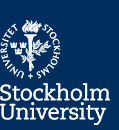
Problem/Purpose: Process prioritisation is an ill-structured and complex problem that remains a mystery phase in business process management (BPM) research. More explorative approaches are called upon to tackle process management problems, to facilitate process innovation and to design new processes in dynamic environments. This dissertation aims (i) to design and evaluate a Prioritisation and Categorisation Method (PCM) for addressing process prioritisation problems; and (ii) to explore process innovation by disruptive technologies.
Research methods: This research follows the design science research (DSR) paradigm. The design exploration and the engaged scholarship approaches are also adapted. The demonstration and evaluation of the Prioritisation and Categorisation Method have been conducted with case studies in large Swedish companies, i.e. Seco Tools and Ericsson. An empirical study of the impacts of disruptive technologies on process innovation was conducted at a large insurance company in Sweden.
Results: This research has led to the design and evaluation of the PCM: a new context-aware, effective and holistic method for BPM. In addition, the lessons learnt from the insurance case deepened the understanding of the challenges that are faced by a company when exploring new capabilities (e.g. processes and IT) for future business. Such lessons also emphasise the necessity of configuring PCM based upon business contingencies and industry factors in process prioritisation.
Contributions: This dissertation contributes a novel method to explore BPM in a holistic, yet flexible and effective way. The challenges identified in process innovations improve the configuration capabilities of the PCM through a deeper understanding of the dynamic capabilities within organisations (Capability Layer Model-CLM). This research contributes design knowledge to DSR in the forms of the PCM as an invention, and the three design principles for the PCM: design by holistics, design by commitments and design by explorations. The research is evaluated as good BPM and good design science research.
Click this link to read the thesis



